5 hrs, 18 kms
I thought I had this next stretch all planned out nicely: follow old Route 22 up the mountains, then railroad turned trail that runs parallel to it
... then a trail to the Portage Railroad Historic Site... then head north on a road to Tunnelhill, the first of my series of Cambrian towns.
Things start just fine. The leaves are changing color so the scenery is beautiful. There's a dam a reservoir which makes for a nice photo op. But after 2 hours or so I start to wonder if I missed the trail. Then there an overpass and a what clearly looks like a railway turned train above it... except it runs backwards. I decide to take it anyways, figuring I must have missed the first turn off. I hike for a ways until I find a trail heading north up the the mountain. I figure I'd better take it and hope it's the trail I was supposed to take.
This trail clearly hasn't been cleared in a long time. At some point its got so much brush covering it, I figure it'd be easy just to blaze my own trail straight up the mountain. I figure, Tunnelhill has to be right over this mountain somewehere, right?
I've attempted blazing my own trail several times, and usually it's ended badly
. Yet here I am again, putting my orientation skills to the test. It's an arduous climb to the top, and other then a few sections of brambles I manage to find a decent route up. Once at the top, there's a wooded plateau, then the ground starts sloping down. This means I've crossed the ridge and am heading north towards Tunnelhill, right? These Appalachian ridges are predictably long and straight... up one side and down the other...
I find a path which is nice... but it seems to be running parallel with the mountain rather than down. So I abandon it and go back to trailblazing. I hear a highway up ahead, and I assume it must be the freeway I have to cross to get to Tunnelhill.
Finally I reach a dirt road and heave a sigh of relief. No more trudging through the forest, not sure of where I'm going. I quicken my pace and start heading down hill.
The road turns and, looking at the sun, I get the uneasy feeling that I'm going south instead of north
. Should I turn around and go the other way? That would be a long uphill climb--with the possibility of it being the wrong way. I decide to just continue on downhill to the highway below.
... And... it's basically where I started two hours ago. I've just walked in a giant circle. Once again, my orientation instinct has failed me.
Oh well. It's not as bad as having my car break down like it did last time, I try to reassure myself. I should still be able to recoup my losses. Maybe I can even convince myself that I wanted to wander around the woods for a couple of hours...
The Portage Railroad
Then, suddenly my day gets better. Much better.
I'd been planning to check out the Portage Railroad National Historic Site simply because... it's a national historic site. I didn't think much of it, assuming it's some sort of inclined railway--which I've seen many of
.
I guess I missed the word "portage", which I've only heard before in the context of, like when you have to carry your canoe to avoid rapids or to get from one lake to another.
I never thought that "Portage Railroad" means exactly that: its a railroad that once carried canal boats over the mountains. Suddenly, I am absolutely fascinated.
I reach a beautiful stone bridge which was actually an overpass for horsecarts to cross over the railway (I guess even 180 years ago Americans didn't like to have to wait to cross a railway!) Then there's a straight, grassy incline up the mountainside. I read the historic markers and it gets more and more interesting.
Let's back up a little. Back in the early 1800s, there was a fervent passion to connect different regions of this new country, to be able to move people and goods back and forth easily. As in Europe, water seemed to be the best option
. But as people moved west there was one seemingly insurmountable obstacle for keeping America connected: the Appalachian mountains. Just moving goods over the mountains by wagons and mule trains wasn't going to hack it.
Massive canal projects were underway. The Erie Canal had just been completed, an amazing achievement, connecting the Great Lakes with the Atlantic. The C & O canal along the Potomac was underway.
Then, here in the heart of the Allegheny Mountains, it was felt that another route was needed. I can only imagine what the reaction must have been when someone suggested the idea.
"How about if we carry the canal boats over the mountains?"
That sounds pretty crazy now... I can only imagine how it sounded back then!
But that's exactly what they did. Canal boats arrived in Holidaysburg, then were loaded onto railroad carts, and were hauled by mule up a series of ten inclines
. Then, once over the peak, they would go down another series of inclines to Johnstown, where they'd then be dropped into a new network of canals, thus making it possible to haul goods over the Appalachian Mountains... by boat.
I continue on up to the ridge. Here still stands the station at the top of the incline. During the 20 years that this system was in use, mules were replaced by steam engines at the top of the incline which used a system of ropes and cables to pull the railroad carts loaded with canal boats up the mountainside. It shows how there was even a "safety car" which hauled a heavy anchor that would catch the car if/when the rope broke, hopefully stopping the cars from speeding unrestained down the mountain.
As I observe this display I'm struck by a number of things which give me new insight into the character of my country. One is the crazy originality of this idea. Instead of just unloading boats, hauling the cargo over the mountains onto other boats, as was done elsewhere
... why not just haul the boats themselves? This shows the wild optimism of Americans (and the financiers) to try things never done before. This attitude, I believe, was one of the key components to making America the powerful country of innovation that it is today.
Another thing I think of is this sheer determination to keep America as one single cohesive economy. In other parts of the world natural barriers become borders as they limit interaction between people on both sides. Cultures evolve separately and people remain somewhat isolated.
But in America there was a determination to streamline the connection between all corners of the country, keeping it united and big... and as a result... very powerful.
I suspect that profit was more of a motive for this than patriotism. banks, ferry companies and railroad lines knew that the farther they could reach the more money they would make. But this did help result in making America the most powerful country in the world which hasn't had a civil war or an invasion in over 150 years.
Of course, there are many dark aspects to this nation's rise to superpower status. Genocide... slavery... the military industrial complex...
But today, I'm just going to gaze out on these slopes... imagine the sight of bigass canal boats being hauld up the mountainside... and be inspired by the "can do" spirit of this nation.
1868 A Tribute to American Ingenuity
Tuesday, September 16, 2014
 Tunnelhill, Pennsylvania, United States
Tunnelhill, Pennsylvania, United States
Other Entries
-
731851. Following the Trolley Line
Sep 0115 days prior Rockhill Furnace, United Statesphoto_camera5videocam 0comment 0
Rockhill Furnace, United Statesphoto_camera5videocam 0comment 0 -
741852. Escaping the Rain
Sep 0115 days prior Orbisonia, United Statesphoto_camera4videocam 0comment 0
Orbisonia, United Statesphoto_camera4videocam 0comment 0 -
751853. Across the Bridge
Sep 0115 days prior Shirleysburg, United Statesphoto_camera7videocam 0comment 0
Shirleysburg, United Statesphoto_camera7videocam 0comment 0 -
761854. American Cemeteries
Sep 079 days prior Mount Union, United Statesphoto_camera10videocam 0comment 0
Mount Union, United Statesphoto_camera10videocam 0comment 0 -
771855 My One Hour Hike in Mifflin County
Sep 079 days prior Kistler, United Statesphoto_camera5videocam 0comment 0
Kistler, United Statesphoto_camera5videocam 0comment 0 -
781856 Climbing 1,000 Steps
Sep 079 days prior Mapleton, United Statesphoto_camera28videocam 0comment 0
Mapleton, United Statesphoto_camera28videocam 0comment 0 -
791857 Gun Country
Sep 079 days prior Mill Creek, United Statesphoto_camera6videocam 0comment 0
Mill Creek, United Statesphoto_camera6videocam 0comment 0 -
801858 Pre-dawn Tour
Sep 088 days prior Huntingdon, United Statesphoto_camera11videocam 0comment 0
Huntingdon, United Statesphoto_camera11videocam 0comment 0 -
811859 Forest full of Deer
Sep 088 days prior Petersburg, United Statesphoto_camera19videocam 0comment 0
Petersburg, United Statesphoto_camera19videocam 0comment 0 -
821860 Why Huntingdon is in Decline
Sep 088 days prior Alexandria, United Statesphoto_camera15videocam 0comment 0
Alexandria, United Statesphoto_camera15videocam 0comment 0 -
831861 Reaching Blair County
Sep 097 days prior Birmingham, United Statesphoto_camera19videocam 0comment 0
Birmingham, United Statesphoto_camera19videocam 0comment 0 -
841862 The Mansions of Tyrone
Sep 097 days prior Tyrone, United Statesphoto_camera15videocam 0comment 0
Tyrone, United Statesphoto_camera15videocam 0comment 0 -
851863 A Chat with a Stump Carver
Sep 097 days prior Bellwood, United Statesphoto_camera11videocam 0comment 0
Bellwood, United Statesphoto_camera11videocam 0comment 0 -
861864 The Oldest Gas Station in the World
Sep 106 days prior Altoona, United Statesphoto_camera45videocam 0comment 0
Altoona, United Statesphoto_camera45videocam 0comment 0 -
871865 A Much Nicer Town Center
Sep 106 days prior Hollidaysburg, United Statesphoto_camera15videocam 0comment 0
Hollidaysburg, United Statesphoto_camera15videocam 0comment 0 -
881866 The Shabbiest Town Hall
Sep 106 days prior Newry, United Statesphoto_camera8videocam 0comment 0
Newry, United Statesphoto_camera8videocam 0comment 0 -
891867 Reboot Hike
Sep 16earlier that day Duncansville, United Statesphoto_camera4videocam 0comment 0
Duncansville, United Statesphoto_camera4videocam 0comment 0 -
901868 A Tribute to American Ingenuity
Sep 16 Tunnelhill, United Statesphoto_camera28videocam 0comment 0
Tunnelhill, United Statesphoto_camera28videocam 0comment 0 -
911869 The Gallitzin Tunnels
Sep 16later that day Gallitzin, United Statesphoto_camera5videocam 0comment 0
Gallitzin, United Statesphoto_camera5videocam 0comment 0 -
921870 The Colors of Fall
Sep 16later that day Sankertown, United Statesphoto_camera4videocam 0comment 0
Sankertown, United Statesphoto_camera4videocam 0comment 0 -
931871 The Haitian Chaplain
Sep 16later that day Cresson, United Statesphoto_camera2videocam 0comment 0
Cresson, United Statesphoto_camera2videocam 0comment 0 -
941874 Railroad Town
Sep 171 day later Portage, United Statesphoto_camera7videocam 0comment 0
Portage, United Statesphoto_camera7videocam 0comment 0 -
951872 The Town that Stood up to the KKK
Sep 171 day later Lilly, United Statesphoto_camera7videocam 0comment 0
Lilly, United Statesphoto_camera7videocam 0comment 0 -
961873 No Sound of Cars
Sep 171 day later Cassandra, United Statesphoto_camera5videocam 0comment 0
Cassandra, United Statesphoto_camera5videocam 0comment 0 -
971875 Quiet Country Road
Sep 182 days later Waterloo, Trinidad and Tobagophoto_camera7videocam 0comment 0
Waterloo, Trinidad and Tobagophoto_camera7videocam 0comment 0 -
981876 Cozy Redneck Town
Sep 182 days later South Fork, United Statesphoto_camera6videocam 0comment 0
South Fork, United Statesphoto_camera6videocam 0comment 0 -
991877 Across the River
Sep 182 days later Ehrenfeld, United Statesphoto_camera4videocam 0comment 0
Ehrenfeld, United Statesphoto_camera4videocam 0comment 0 -
1001878 Heading Back North
Sep 182 days later Summerhill, United Statesphoto_camera14videocam 0comment 0
Summerhill, United Statesphoto_camera14videocam 0comment 0 -
1011879 A Pleasant Main Street
Sep 182 days later Ebensburg, United Statesphoto_camera17videocam 0comment 0
Ebensburg, United Statesphoto_camera17videocam 0comment 0 -
1021880 Up the Hillside
Sep 2812 days later Brownstown, United Statesphoto_camera2videocam 0comment 0
Brownstown, United Statesphoto_camera2videocam 0comment 0 -
1031881 Where the Wealthy Lived
Sep 2812 days later Westmont, United Statesphoto_camera11videocam 0comment 0
Westmont, United Statesphoto_camera11videocam 0comment 0 -
1041883 The Troubling Truth of the Johnstown Flood
Sep 2812 days later Johnstown, United Statesphoto_camera41videocam 0comment 0
Johnstown, United Statesphoto_camera41videocam 0comment 0 -
1051884 Heading Upstream
Sep 2812 days later Franklin, United Statesphoto_camera9videocam 0comment 0
Franklin, United Statesphoto_camera9videocam 0comment 0 -
1061885 Another Sad Suburb
Sep 2812 days later East Conemaugh, United Statesphoto_camera5videocam 0comment 0
East Conemaugh, United Statesphoto_camera5videocam 0comment 0 -
1071886 Perched on a Plateau
Sep 2812 days later Daisytown, United Statesphoto_camera4videocam 0comment 0
Daisytown, United Statesphoto_camera4videocam 0comment 0 -
1081887 A Tiny Suburb
Sep 2913 days later Dale, United Statesphoto_camera3videocam 0comment 0
Dale, United Statesphoto_camera3videocam 0comment 0

 Tunnelhill, Pennsylvania, United States
Tunnelhill, Pennsylvania, United States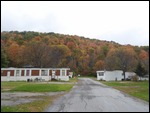
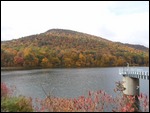
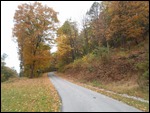

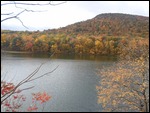
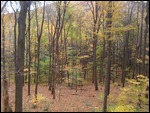
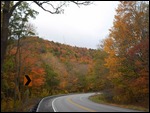


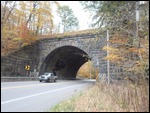
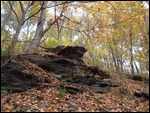
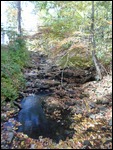
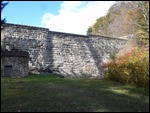
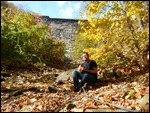
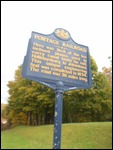
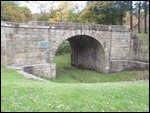
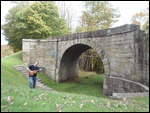
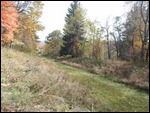
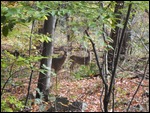

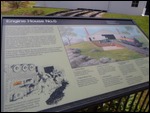
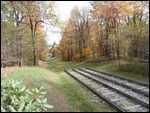
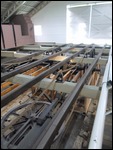
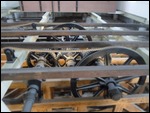
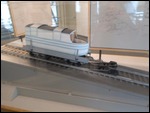
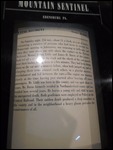
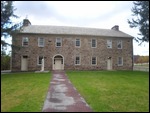
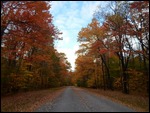

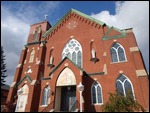
2025-05-22